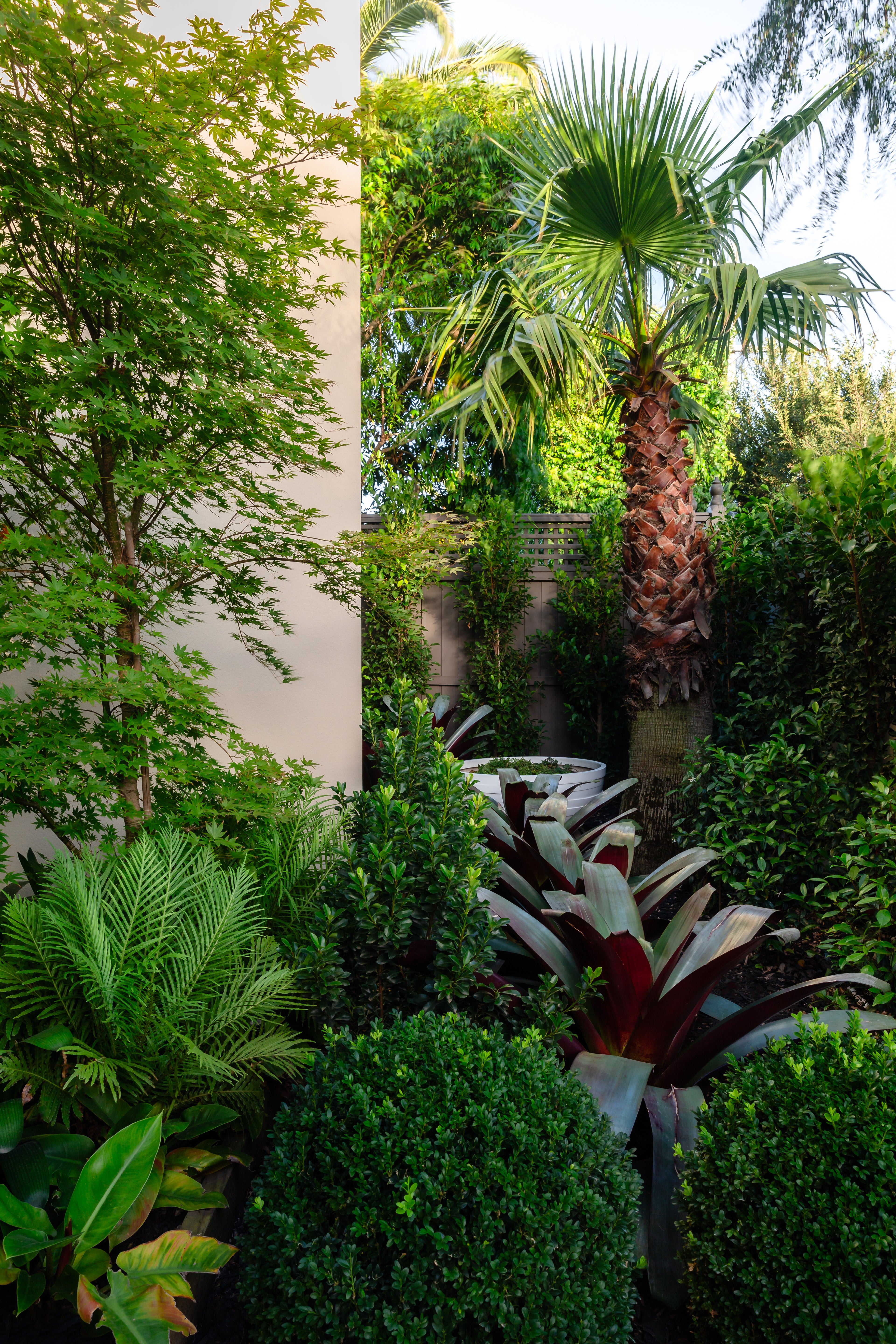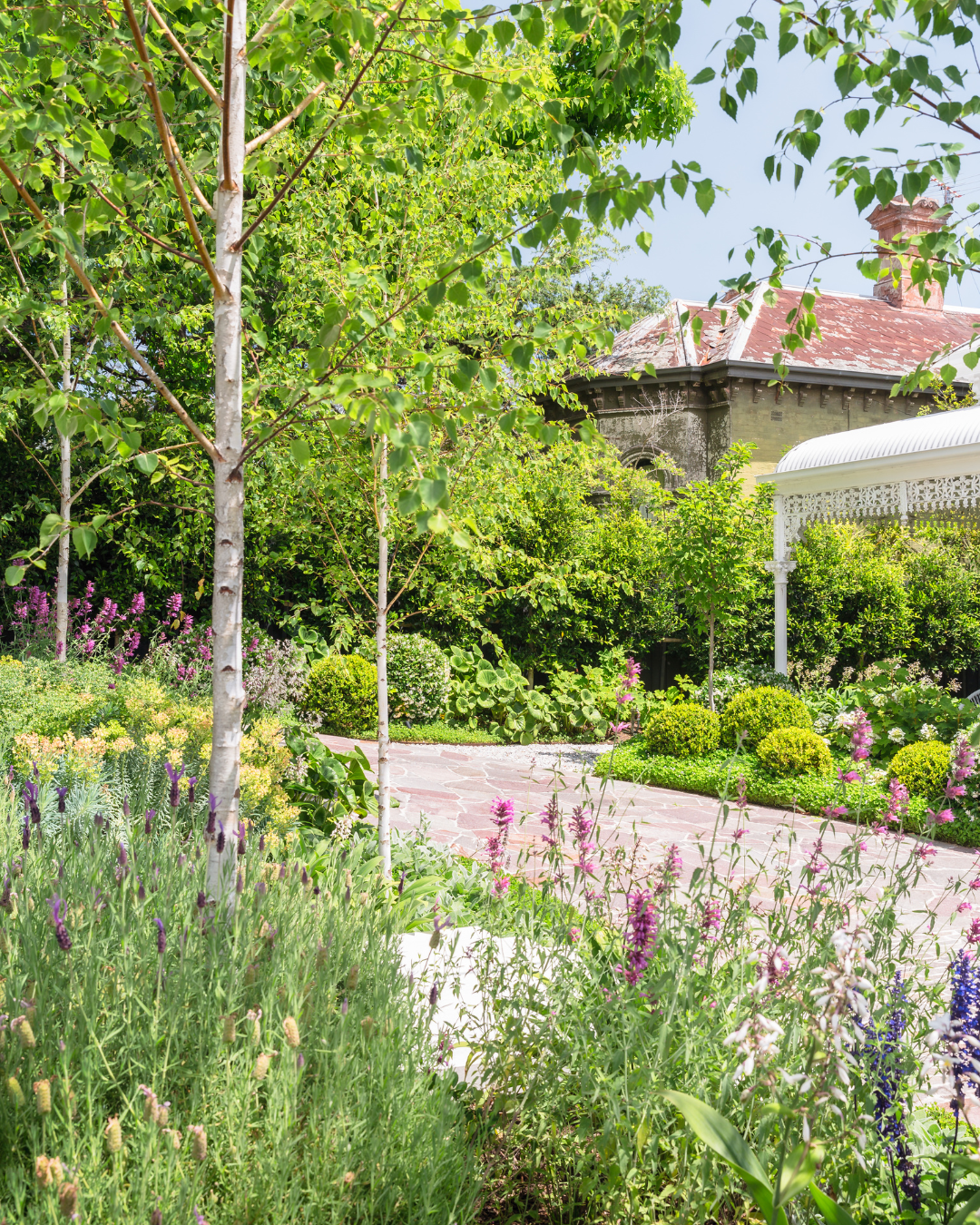Creating a formal garden look involves selecting trees with clean lines and controlled shapes that exude elegance and sophistication. Certain trees stand out for those aiming to elevate their outdoor spaces into refined retreats. Here, we’ll explore three exceptional options: Cupressus sempervirens 'Glauca' (Italian Cypress), Acer palmatum dissectum 'Inaba Shidare' (Weeping Japanese Maple), and Prunus serrulata 'Kanzan' (Kanzan Cherry). Each of these trees not only enhances the beauty of your garden but also brings unique qualities that align with a luxurious aesthetic.
Cupressus sempervirens 'Glauca' (Italian Cypress)
The Cupressus sempervirens 'Glauca', commonly known as the Italian Cypress, is an iconic tree recognized for its narrow, columnar shape and stunning bluish-green foliage. This tree embodies elegance, making it a quintessential choice for creating a formal garden look. Its upright growth habit offers vertical lines that add height and structure, perfect for framing pathways or accentuating architectural features. With minimal maintenance needs and year-round greenery, the Italian Cypress provides a stunning backdrop that enhances the aesthetic appeal of any garden.
Key Facts
- Mature Height: 10-15 meters
- Mature Width: 1-2 meters
- Best Uses: Feature tree, hedging, and screening
- Leaf Appearance: Scale-like, dense, and blue-green
- Rate of Growth: Moderate to fast
- Tolerates: Drought, poor soil conditions, and coastal exposure

Why It's Perfect for Your Garden
The Italian Cypress is ideal for creating a polished, sophisticated environment. Its vertical lines draw the eye upward, making it an excellent choice for formal settings. Whether planted in rows to create a dramatic entrance or as standalone specimens to highlight architectural features, the Italian Cypress delivers timeless elegance and refined luxury.
Acer palmatum dissectum 'Inaba Shidare' (Weeping Japanese Maple)
The Acer palmatum dissectum 'Inaba Shidare', known as the Weeping Japanese Maple, is a stunning tree that adds a delicate touch to any formal garden. With its cascading branches and finely dissected leaves, this tree offers a graceful silhouette that softens the sharp lines of traditional landscaping. The deep red to purple foliage, especially vibrant in autumn, creates a striking contrast against the greenery of other plants, enhancing the overall visual appeal of your garden.
Key Facts
- Mature Height: 1.5-3 meters
- Mature Width: 2-4 meters
- Best Uses: Feature tree, focal point, and ornamental display
- Leaf Appearance: Deeply lobed, feathery leaves in red to purple hues
- Rate of Growth: Slow to moderate
- Tolerates: Partial shade and well-drained soils

Why It's Perfect for Your Garden
The Weeping Japanese Maple brings a sense of tranquility and elegance to a formal garden. Its unique form creates an eye-catching focal point, ideal for positioning near entrances or along pathways. The delicate, flowing branches contrast beautifully with more structured elements, allowing for a harmonious blend of formality and grace. This tree not only enhances the aesthetic appeal of your garden but also invites quiet contemplation, making it a truly valuable addition.
Prunus serrulata 'Kanzan' (Kanzan Cherry)
The Prunus serrulata 'Kanzan', or Kanzan Cherry, is a stunning ornamental tree with its profusion of double pink flowers in spring. This tree is celebrated for its round crown and strong, upright branches, making it a perfect specimen for creating a formal garden look. The striking blooms are a spectacular sight, providing a seasonal display that adds vibrant color to your landscape, while its structured growth habit maintains the formal aesthetic year-round.
Key Facts
- Mature Height: 5-8 meters
- Mature Width: 4-6 meters
- Best Uses: Feature tree, shade tree, and ornamental display
- Leaf Appearance: Glossy green leaves that turn golden-yellow in autumn
- Rate of Growth: Moderate
- Tolerates: A variety of soil types and moderate drought

Why It's Perfect for Your Garden
The Kanzan Cherry offers a stunning springtime display and contributes to the overall structure and elegance of a formal garden. Its rounded crown provides ample shade and can create a picturesque canopy over pathways or seating areas. The beautiful flowers draw the eye, serving as a captivating focal point. Coupled with its lush green foliage, this tree seamlessly blends beauty and functionality, making it a top choice for discerning gardeners looking to enhance their outdoor spaces.
Conclusion
Selecting the right trees is essential for creating a formal garden that embodies sophistication and style. The Cupressus sempervirens 'Glauca', Acer palmatum dissectum 'Inaba Shidare', and Prunus serrulata 'Kanzan' are excellent choices that provide clean lines, controlled shapes, and stunning seasonal displays. Each tree offers unique qualities that enhance the beauty of your garden while requiring minimal maintenance, making them ideal for busy homeowners. Elevate your outdoor spaces with these elegant selections and enjoy the refined luxury they bring.
FAQs
What are the best trees for a formal garden?
The best trees for a formal garden include Cupressus sempervirens 'Glauca', Acer palmatum dissectum 'Inaba Shidare', and Prunus serrulata 'Kanzan', as they all provide clean lines and structured growth.
How much maintenance do these trees require?
These trees are relatively low maintenance. The Italian Cypress and Kanzan Cherry require occasional pruning, while the Weeping Japanese Maple thrives with careful attention to watering and soil conditions.
Can these trees tolerate different soil types?
All three trees can adapt to various soil types, but they perform best in well-drained soils. The Italian Cypress and Kanzan Cherry are particularly tolerant of poor soil conditions.
What is the best time to plant these trees?
The ideal time to plant these trees is during the cooler months of early spring or autumn when the soil is workable and the trees can establish their roots before summer heat.










